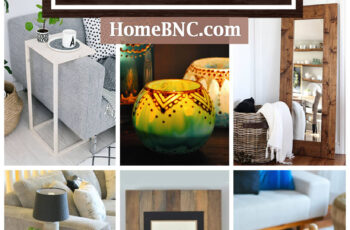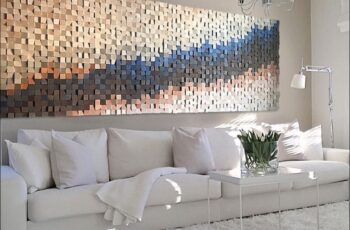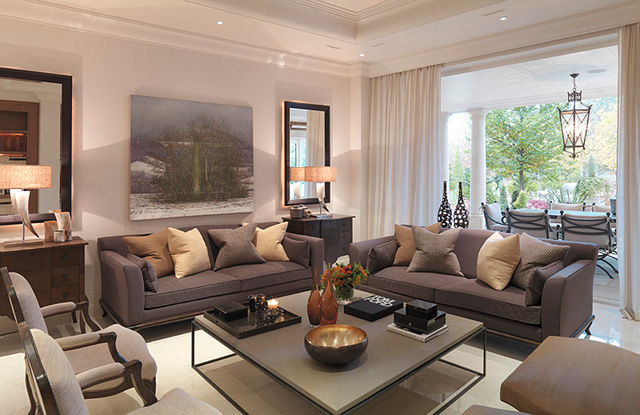
The Art of Living: Crafting a Well-Designed Living Room
The living room, often considered the heart of the home, is more than just a collection of furniture. It’s a stage for life’s everyday dramas and celebrations, a sanctuary for relaxation, and a canvas for personal expression. A truly well-designed living room transcends fleeting trends, blending functionality, aesthetics, and comfort to create a space that not only looks beautiful but also feels deeply inviting and perfectly tailored to its inhabitants.
Achieving this harmonious balance is an art, one that considers every element from the grand architectural gestures to the smallest decorative accent. It’s about understanding human behavior, light, color, and texture, and then meticulously orchestrating these components to evoke a desired mood and serve a specific purpose. Let’s delve into the multifaceted principles that underpin a truly well-designed living room.
I. The Foundation: Function, Flow, and Focal Points
Before a single piece of furniture is chosen, the design process must begin with a clear understanding of the room’s primary purpose. Is it a bustling family hub, a quiet reading nook, an entertainment zone, or a sophisticated space for formal gatherings? Often, it’s a combination of these, requiring versatile design solutions.
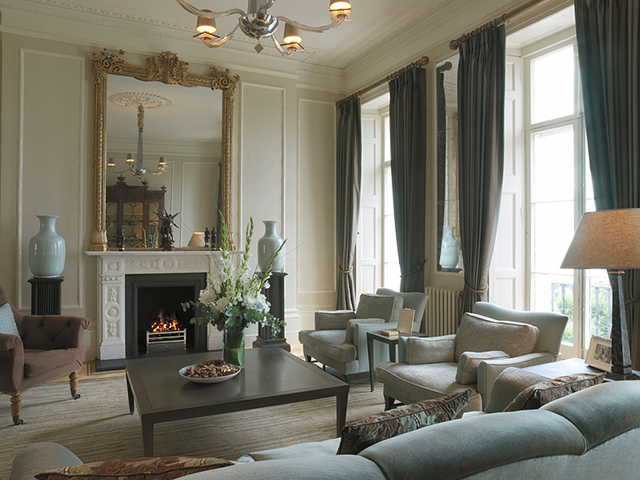
1. Defining Purpose:
Consider how you intend to use the space most often. Will it host movie nights, intimate conversations, or solitary moments of reflection? This clarity guides every subsequent decision, from furniture layout to lighting choices.
2. Optimizing Flow and Layout:
Traffic flow is paramount. A well-designed living room allows for effortless movement without obstruction. Pathways should be clear and wide enough – ideally 30-36 inches – to avoid awkward maneuvering around furniture. Furniture should be arranged to facilitate conversation, typically with seating arranged in a U-shape, L-shape, or facing each other, all within comfortable speaking distance (around 8 feet apart). Avoid pushing all furniture against the walls; bringing pieces into the center of the room can create more intimate zones and a greater sense of cohesion.
3. Establishing a Focal Point: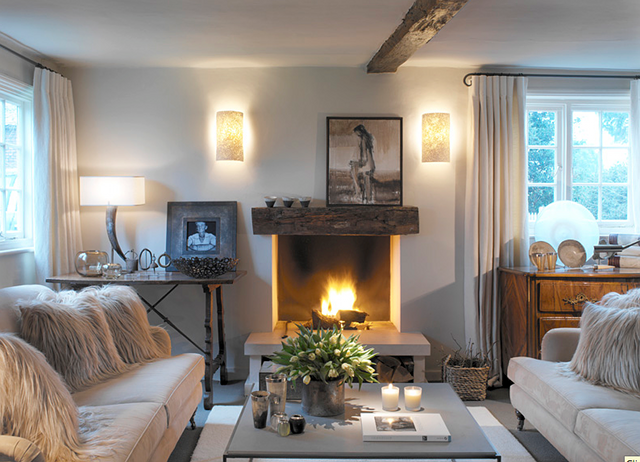
Every living room benefits from a strong focal point – an element that draws the eye and anchors the space. This could be a majestic fireplace, a large window with a captivating view, a striking piece of art, or a well-placed television. Once identified, furniture should be arranged to orient towards this point, enhancing its prominence and guiding the room’s narrative. If no natural focal point exists, one can be created through a dramatic gallery wall, a large mirror, or a statement piece of furniture.
II. The Canvas: Color, Light, and Texture
These three elements are the sensory backbone of a living room, dictating its mood, perceived size, and overall ambiance.
1. The Power of Color:
Color sets the emotional tone. Warm colors (reds, oranges, yellows) can create a cozy, energetic atmosphere, while cool colors (blues, greens, purples) evoke calmness and serenity. Neutrals (grays, whites, beiges) offer a timeless backdrop, allowing other elements to shine and providing flexibility for future updates. A well-designed palette typically involves a dominant neutral, a secondary color for larger upholstered pieces or walls, and an accent color used sparingly for decorative items. The key is balance and cohesion, ensuring the colors flow harmoniously throughout the space and reflect the desired mood.
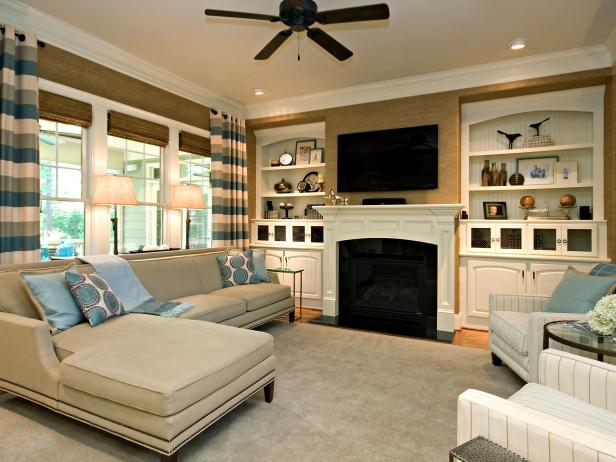
2. Mastering Light:
Lighting is arguably the most critical element in interior design, capable of transforming a space from dull to dynamic. A well-designed living room employs layered lighting:
- Ambient Lighting: Provides overall illumination (recessed lights, ceiling fixtures).
- Task Lighting: Supports specific activities (reading lamps next to a sofa, table lamps).
- Accent Lighting: Highlights architectural features, artwork, or decorative objects (picture lights, wall sconces).
Maximizing natural light is equally important. Large windows, strategic mirror placement, and light-colored walls can amplify natural illumination, making a room feel larger and more open. Dimmer switches are invaluable for adjusting the mood from bright and functional to soft and intimate.
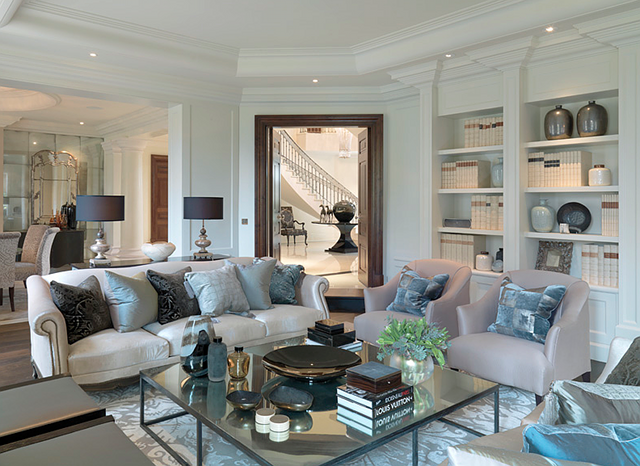
3. The Richness of Texture:
Texture adds depth, warmth, and tactile interest, preventing a room from feeling flat or sterile. It’s the interplay of rough and smooth, hard and soft, matte and glossy. Imagine the contrast between a plush velvet sofa, a rustic wooden coffee table, a sleek metal lamp, and a nubby wool rug. Introducing various textures through fabrics (linen, silk, tweed), materials (stone, wood, glass, metal), and finishes creates a multi-sensory experience that invites touch and exploration. This layering contributes significantly to a room’s perceived comfort and sophistication.
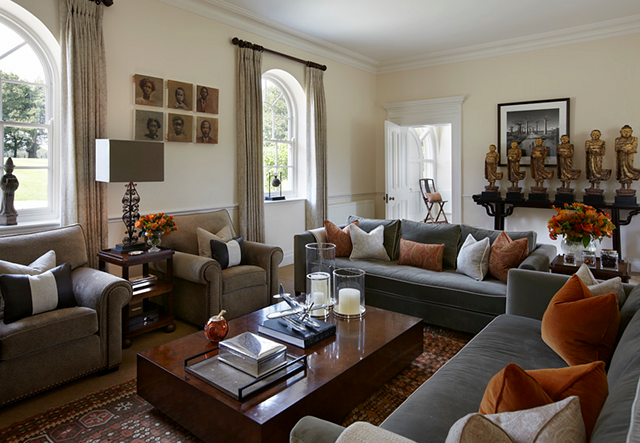
III. The Furniture: Scale, Proportion, and Comfort
Furniture forms the skeletal structure of the living room, defining its zones and functionality. Thoughtful selection is paramount.
1. Scale and Proportion:
These are critical yet often overlooked principles. Furniture should be scaled appropriately to the room’s size. Oversized pieces can overwhelm a small room, making it feel cramped, while too many small pieces can make a large room feel cluttered and disjointed. Proportion refers to the relationship between the sizes of different pieces of furniture within the room. A large sofa should be balanced by similarly robust coffee tables or armchairs, not dwarfed by delicate side tables. Visual weight also matters; a bulky, dark piece will feel heavier than a light, airy one of the same dimensions.
2. The Primacy of Comfort: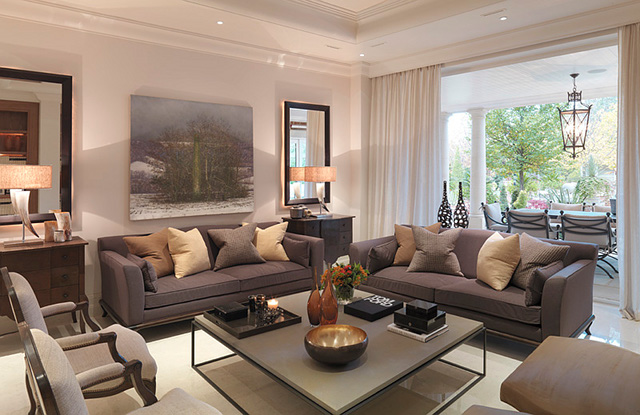
A beautiful living room that isn’t comfortable fails its core purpose. Prioritize seating that is genuinely comfortable for extended periods. Test sofas and chairs for cushion firmness, back support, and armrest height. Comfort extends beyond physical sensation to the psychological ease a space provides. Soft throws, plush pillows, and an inviting layout all contribute to an atmosphere that encourages relaxation and lingering.
3. Quality and Durability:
Investing in well-made furniture is a long-term strategy. Quality pieces not only withstand the rigors of daily life but also age gracefully, developing character over time. Consider the frame construction, fabric durability, and craftsmanship. While budget is always a factor, a few high-quality foundational pieces can elevate an entire room and provide lasting satisfaction.
IV. The Personal Touches: Art, Accessories, and Storytelling
Once the foundational elements are in place, it’s the carefully curated details that infuse a living room with personality and soul. This is where the space truly becomes "yours."
1. The Power of Art:
Art is a profound expression of individuality and can serve as a powerful focal point or a subtle layer of visual interest. Whether it’s a large abstract painting, a collection of framed photographs, or a sculptural piece, art should resonate with your personal taste and complement the room’s aesthetic. Proper placement and lighting are crucial to showcasing art effectively.
2. Curated Accessories:
Accessories are the jewelry of a room, adding sparkle, texture, and a sense of completeness. This includes decorative objects, vases, candles, and decorative pillows. The key is curation, not accumulation. Each piece should have a purpose, tell a story, or contribute to the overall aesthetic. Grouping objects in odd numbers (like three) often creates a more visually pleasing arrangement. Layering accessories – placing objects on trays, using books as risers, or combining different heights and textures – adds depth and interest.
3. Incorporating Nature:
Plants bring life, color, and a sense of calm to any interior. They improve air quality and add an organic element that softens hard lines and textures. From towering fiddle leaf figs to delicate succulents, plants connect the indoor space with the natural world.
4. Storytelling Through Collections:
A well-designed living room isn’t just aesthetically pleasing; it tells the story of its inhabitants. Displaying cherished books, travel souvenirs, family photos, or personal collections adds layers of meaning and authenticity. These personal touches prevent a room from feeling like a showroom and instead transform it into a lived-in, loved space that reflects a unique journey.
V. Beyond Aesthetics: Practical Considerations
A truly well-designed living room also integrates practical solutions seamlessly into its aesthetic.
1. Smart Storage Solutions:
Clutter can quickly derail even the most beautiful design. Integrated storage solutions – such as built-in shelving, ottomans with hidden compartments, or stylish baskets – help maintain order without sacrificing style. Thinking vertically with wall-mounted shelves or tall cabinets can maximize space in smaller rooms.
2. Seamless Technology Integration:
In today’s digital age, technology is an inevitable part of the living room. A well-designed space anticipates this by incorporating solutions for cable management, discrete placement of speakers or soundbars, and convenient charging stations. The goal is to make technology feel like an integrated part of the design, rather than an unsightly afterthought.
3. Durability and Maintenance:
Consider your lifestyle when choosing materials. If you have pets, children, or frequently host gatherings, opt for durable, easy-to-clean fabrics and finishes. Performance fabrics, stain-resistant rugs, and robust surfaces can withstand daily wear and tear, ensuring your beautiful living room remains practical and enjoyable for years to come.
The Journey of Design: From Vision to Reality
Designing a living room is an iterative process, a dialogue between aspiration and practicality. It often begins with inspiration – a magazine clipping, a travel memory, a piece of art. Translate this inspiration into a clear vision for the space, considering the principles outlined above. Create mood boards, sketch layouts, measure meticulously, and don’t be afraid to experiment.
Ultimately, a well-designed living room is an investment in your well-being. It’s a space that calms and invigorates, facilitates connection, and celebrates your unique identity. It’s not about following strict rules but understanding the foundational principles and then applying them with creativity and intention to craft a space that is not only visually stunning but profoundly livable – a true reflection of the art of living.
The Art of Living: Crafting a Well-Designed Living Room | in opo wae, wis opo wae, and on last post i/admin have give some post/articles and many pictures gallery about " Unveiling Elegance: Wallpaper Living Room Ideas for Decorating Your Dream Space" if you have not seen it, please check out before seeing this. (just click text in "anchor text" to read or see last post first), I have packed all images collections become 1 gallery images on post and this time i just want to share again from my collections to could be useful :D. These pictures of The Art of Living: Crafting a Well-Designed Living Room, I have collected in a fairly long time, and from various media such as the Internet, books, magazines, newspapers, comics, etc like as from search engine and other sources to be used as ideas for you. and these images has combined into one page on 0 Photos/images Gallery below. lets views.. o[^_^]o.The Art of Living: Crafting a Well-Designed Living Room pictures collections gallery
The Art of Living: Crafting a Well-Designed Living Room is a nice pictures and stock photo for your computer desktop or your smartphone device (ipad, tablet, blackberry, iphone, and other device) and also for your personal use. Free available for desktop wallpaper or additional image collections for your all needs. And was uploaded by admit at date August 1, 2025. You can download it in your computer by clicking download button to save image... have nice day and have fun guys..
This 1 image in featured post from 0 Photos/images Gallery and awesome picture selections about The Art of Living: Crafting a Well-Designed Living Room is available to download. "Download & Save" images/pictures/wallpapers now and this Is one of the post that listed in packed to Category is Living Room Design Ideas directory, with image dimension/resolution size is 640 × 415 px and size image/picture file is 123 KB with original link post ID is : https://powae.pw/the-art-of-living-crafting-a-well-designed-living-room/. Get download/save images in post and gallery, "download" images or "preview" it on a bigger image for spesification sample in Large size (full attachment size) here : [Download & View to Large size]. Just Simple way, in thumbnail or in Gallery. *Click images to view Large Size.We collect this wonderful image from online and choose one of the best for you. Pictures collection that posted here was carefully chosen and published by author after choosing the ones which are best among the others. So, ultimately we make it and here these list of best image for your inspiration and informational reason regarding the The Art of Living: Crafting a Well-Designed Living Room as part of blogsite exclusive updates collection. So, take your time and find the best informations and pictures posted here that suitable with your needs and use it for your own collection and personal use. About Image information: Image has been submitted and You are able to give your opinion as evaluations to our web site value.
Don't forget to comment if you interest with this images, you can share this post to social media like as facebook, twitter, google+, pinterest, stumbleupon, and more. just click social media buttons for share this post The Art of Living: Crafting a Well-Designed Living Room Now. :)
Thanks for your visit, I hope you happy come to opo wae, wis opo wae, and get what you're looking for. And hope sometimes you will come back again here. All you need to do is help us develop by discussing this The Art of Living: Crafting a Well-Designed Living Room if you like it "leave your comment". have fun, Thank you.



